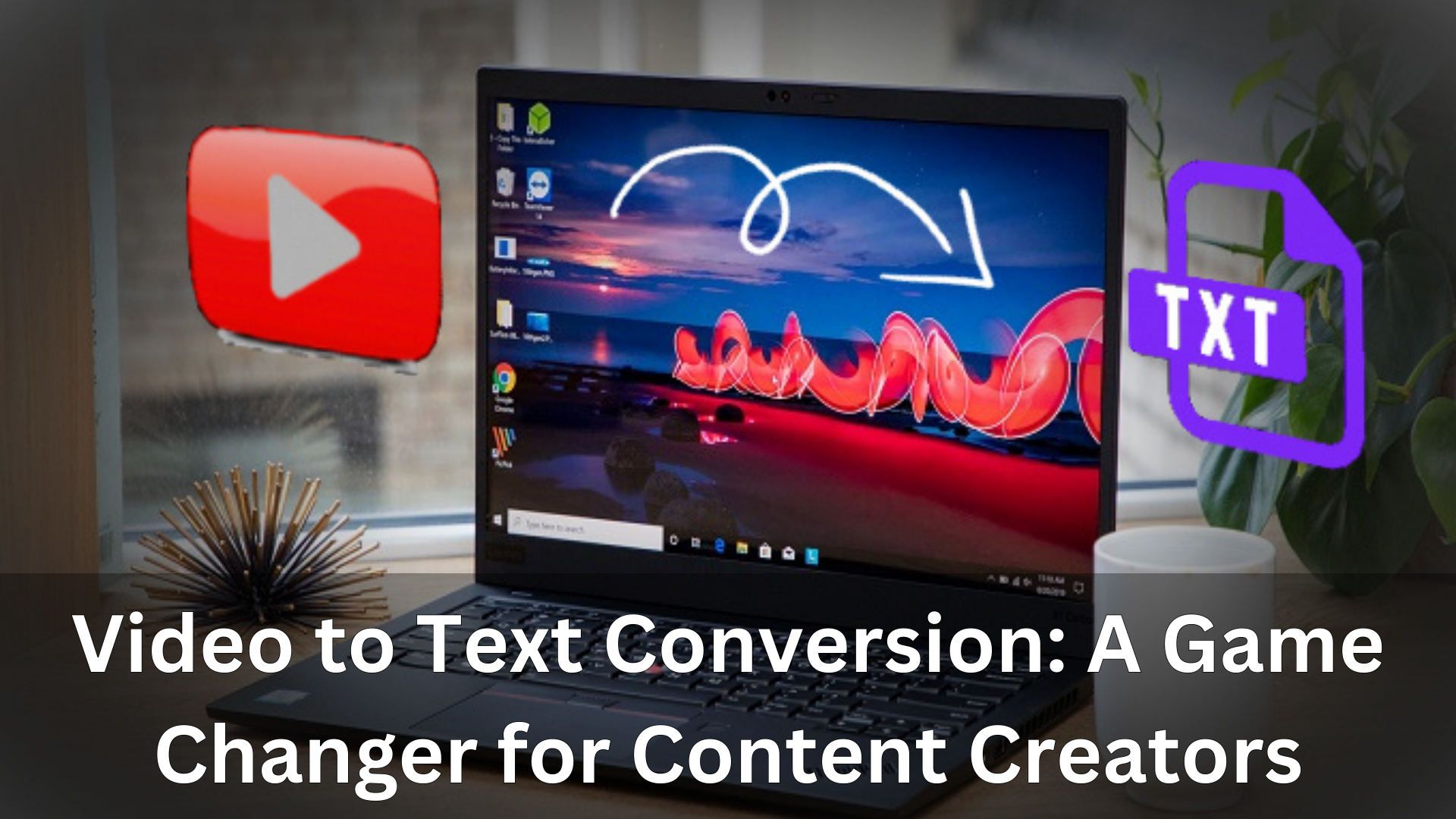
Video to Text Conversion: A Game Changer for Content Creators
Content creation innovation is the driving force that empowers creators to engage their audiences effectively. But what if there was a technology creators could use to take advantage of the content they have already made? Well, there is one: video-to-text converters. This remarkable technology is changing how many produce, adapt, and distribute content. This article explores the impact of video-to-text conversion by delving into its advantages, applications, and the newfound opportunities it provides for content creators.
Understanding Video-To-Text Conversion
As the name suggests, video-to-text conversion involves transcribing spoken content from videos into written text. This process utilizes a video-to-text converter to transform audible word noises into a written form. It produces a text piece that you can then edit, format, and repurpose to create new content forms.
Benefits of Video-To-Text Conversion for Content Creators
Creators can reap several advantages from video-to-text conversion to open up new and unique possibilities for their work. The most common ones they can expect from this technology include:
- Expanded Accessibility and Reach: One of the benefits of video-to-text conversion is its ability to enhance accessibility. While captivating, videos can present challenges for individuals with hearing impairments. By including a written version in addition to the video, creators ensure their content can reach an audience and have an impact.
- Search Engine Optimization (SEO): Content creators who want to improve their visibility understand the importance of SEO. Text-based content is easier for search engines to index, making it more discoverable for others. Converting video content into text lets creators incorporate keywords, titles, and descriptions, enhancing their SEO efforts and driving traffic to their platforms.
- Repurposing Content: Converting videos into text allows creators to repurpose their content into different, new formats. This flexibility enables creators to cater to audience preferences and consumption habits without starting from scratch.
- Enhanced Engagement and Understanding: Some individuals prefer reading over watching videos due to preferences or learning styles. Providing a written transcript alongside the video allows viewers to engage with the content in their own manner, leading to comprehension and retention.
- Efficient Editing Process: Editing video content can be time-consuming and technically challenging. By converting videos into text, creators can streamline the editing process.
- Detailed Analytics and Insights: Video platforms often provide insights into viewer engagement. Converting video content into text can give creators a deeper understanding of viewer behavior. Text analytics tools can highlight parts of the content where viewers might lose interest and pinpoint the topics that generate the most discussion. This valuable data helps creators refine their video content for impact.
Applications of Converting Videos Into Text
Converting videos into text allows for analyzing customer feedback, preferences, and sentiments. After all, data in text form is much easier to categorize, quantify, and extract insights from. This insight then helps companies make decisions and improve their products or services. Below are even more applications in which video-to-text conversion can come in handy:
- Education and E-learning: Educational institutions and online learning platforms can utilize video-to-text conversion to create learning materials. Making transcripts of lectures and tutorials helps students with different learning styles to access this content easily. It also assists in note-taking and revision.
- Video Documentation: Converting videos into text is extremely valuable for documenting events, interviews, and meetings. Text transcripts serve as references, enabling individuals to locate and review specific information.
- Monetizing Content: Content creators can generate revenue by monetizing their transcribed content through certain channels. They can develop e-books, online courses, or downloadable resources from the text.
- Language Translation: Transcribing videos into text simplifies translating content into other languages. The textual content can be easily localized, making it accessible to a whole new audience.
- Accessibility Compliance: Converting videos into text supports compliance with accessibility standards by ensuring that content follows ethical guidelines regarding inclusivity and ease of access for people with disabilities.
- Market Research and Analysis of Customer Feedback: Businesses often collect video testimonials, conduct focus group discussions, or conduct interviews for market research purposes. Text conversions of these video sessions can lead to a better understanding of customers’ opinions and sentiments toward a given product or service.
Opportunities for Content Creators
There are several possibilities for creators that arise from video-to-text conversion. Some of them are:
- Diverse Content Formats: With transcribed text, creators can easily transform videos into blog posts, social media snippets, infographics, podcasts, and more. This versatility enables engagement with various audience segments and platforms.
- Expanded Audience Reach: Catering to text-based learners through transcribed content helps content creators to expand their audience reach and engagement. Transcriptions ensure that no viewer is left behind.
- SEO Enhancement: Utilizing text for SEO optimization improves the chances of discovery through search engines, thereby increasing the creator’s online presence.
- Cross-Promotion: Sharing transcribed content across multiple platforms is an effective way to boost promotional efforts. Creators can use text-based content to drive traffic to their videos and vice versa.
In Conclusion
The conversion of video to text has opened up an era for content creation, giving creators the power to utilize their video content fully. The advantages of improved accessibility, search engine optimization, content repurposing, and increased engagement only scratch the surface of this technology’s transformation.
From education to monetizing content, there are opportunities everywhere for content creators to explore and take advantage of. As the digital landscape evolves, video and text conversion demonstrates how technology can foster innovation and encourage communication.



